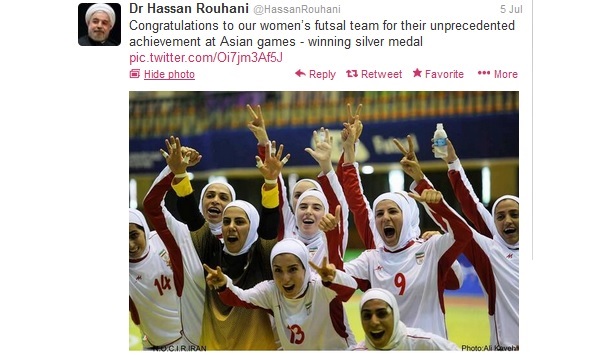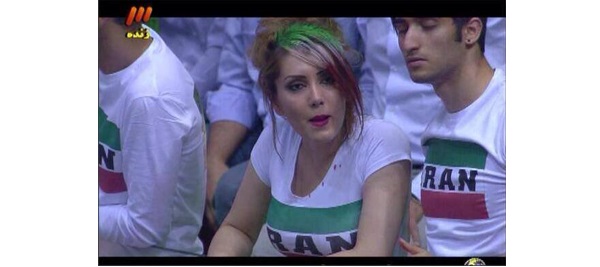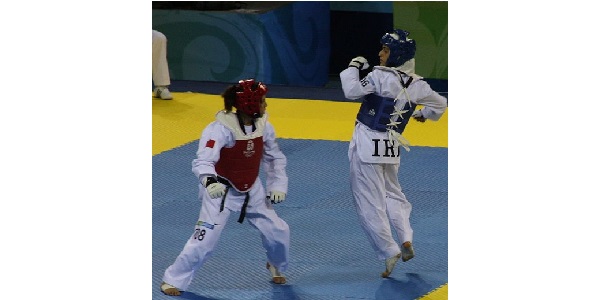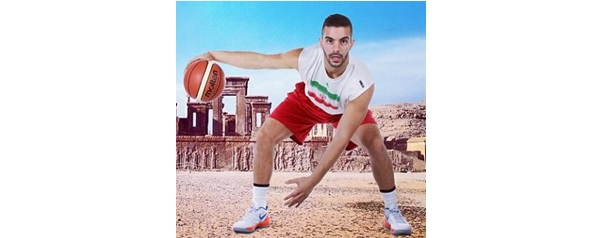Garrett Nada
Faced with few social options or outlets to let off steam, Iran’s young have turned almost fanatically to sports. The first post-revolution generation now includes some world-class athletes—both male and female—as well as millions of diehard sports fans. Iran’s youth claimed 12 medals at the 2012 London Olympics—more than any other Middle Eastern country.
But sports are not limited to top achievers. Street sports are just as popular. The concrete jungle of Tehran now has dedicated skate parks where amateur bikers and skaters hold impromptu competitions. And the girls are into as many athletics as the boys.
But sports are not limited to top achievers. Street sports are just as popular. The concrete jungle of Tehran now has dedicated skate parks where amateur bikers and skaters hold impromptu competitions. And the girls are into as many athletics as the boys.
 The Iranian passion for sport was reflected in the street celebrations after Iran qualified for the 2014 World Cup by defeating South Korea. The celebrations on June 18 were similar to the outpouring after Hassan Rouhani won the presidential election three days earlier. Soccer reigns supreme among youth. But skateboarding, taekwondo, snowboarding and other sports are also gaining ground.
The Iranian passion for sport was reflected in the street celebrations after Iran qualified for the 2014 World Cup by defeating South Korea. The celebrations on June 18 were similar to the outpouring after Hassan Rouhani won the presidential election three days earlier. Soccer reigns supreme among youth. But skateboarding, taekwondo, snowboarding and other sports are also gaining ground. Youth and sport are so intertwined that the government created a Ministry of Youth Affairs and Sport in 2011, which has even allowed women to participate. Nine female athletes represented Iran in the 2012 London Olympics in archery, rowing, shooting, shot put, table tennis and taekwondo. At the 2010 Olympic Games in Vancouver, skier Marjan Kalhor became the first Iranian female to compete in the Winter Olympics. But finding uniforms that conform to both international standards and Iran’s strict dress code has often posed a challenge. Many now complete in sports wearing long pants and hijab (headscarf).
Elham Asghari wore an extra 13 pounds of clothing when she set a new women’s breaststroke record for swimming 20 kilometers (12.4 miles) in the Caspian Sea. She wore a full diving suit, long cape and headscarf. But Iran’s sport ministry would not recognize the record set on June 11 because her “feminine features” were showing when she got out of the water. Asghari explained the controversy in a YouTube video subtitled in English.
Skateboarding, BMX
In athletics, young Iranians are no longer isolated. They keep up with the latest global trends through Facebook and YouTube. Skateboarding, rollerblading and BMXbicycle motocross are increasingly popular, especially in Tehran and other major cities. Security guards usually do not allow skaters to perform stunts in parks or public places, either for safety concerns or because they are a nuisance to some. So MJ Rahimi, a skateboard coach, built a skate park several years ago at Tehran’s Enghelab Sports Complex.
Red Bull, an Austrian energy drink producer, then hosted Iran’s first major skateboard competition. Local newspapers, magazines and television stations covered the event. The government took interest and invested in additional skate parks. The T Sixty skate team shows off their tricks in the following video from the Tehran skate park.
Bikers are as daring as their Western counterparts. Members of the ZanKo freestyle team offered training for young Iranians interested in BMX in the poster below.

Soccer
Soccer is the most popular sport in Iran— outdoor for young males and mainly indoor futsal for young females. Iranians have taken their love of soccer off the field and into the streets. Freestyle football is a one-man sport that has more in common with breakdancing than soccer. Mohammad Akbari from the “PersianBall Crew” juggles, balances and spins a ball in the following video.
Women are banned from attending men’s matches, although some devoted fans have dressed as men to enter stadiums. But they have their own clubs and competitions. In July, the national Iranian women’s team won second place in futsal, a form of indoor soccer, at the Asian Indoor and Martial Arts Games. The feat even won the attention of newly elected President Hassan Rouhani, who tweeted his congratulations.

Uniforms have been an issue in regular world-class soccer for women. The women’s national soccer team had hoped to qualify for the 2012 Olympic Games. But the team withdrew from a qualifying match in 2011 because the Fédération Internationale de Football Association (FIFA) would not allow women to play with their necks covered. FIFA lifted the ban on headscarves in March 2012.
Snowboarding
Snowboarders account for up to 30 percent of Iranians on the slopes, according to the World Snowboard Guide. More than a dozen resorts have helped popularize snow sports, especially among youth. In recent years, Hype, a Dubai-based energy drink company, has hosted snowboarding exhibitions in Iran such as the one in the following video.
Volleyball
Volleyball is increasingly popular as well. The men's national team competed in the Federation Internationale de Volleyball World League Finals for the first time in summer 2013. The team is now ranked 12 worldwide by the federation.

But broadcasting matches is a problem for Iranian television because female fans at international matches are not wearing Islamic dress. Covering the volleyball games has been “more difficult than airing the [presidential] debates,” said Ezatollah Zarghami, head of Islamic Republic of Iran Broadcasting (IRIB), according to news website Asr Iran. IRIB broadcast a June 30 match in Sardinia versus Italy with a seven-second delay to check for images of women not wearing Islamic dress like the picture below.

Volleyball is Supreme Leader Ayatollah Ali Khamenei’s favorite sport, according to his Twitter account.

Taekwondo
The Korean martial art gained ground in the 1960s, but young Iranians are now among the world’s top Taekwondo competitors. Mohammad Bagheri Motamed won a gold medal at the 2009 World Taekwondo Championships in Copenhagen and the silver medal at the 2012 London Olympic Games.
Women have also taken to the sport. In May 2013, four Iranian women won gold or silver medals at the Carthage International Open in Tunisia. Sara Khoshjamal Fekri faced off against a Tunisian opponent at the 2008 Beijing Olympics in the photo below.
Women have also taken to the sport. In May 2013, four Iranian women won gold or silver medals at the Carthage International Open in Tunisia. Sara Khoshjamal Fekri faced off against a Tunisian opponent at the 2008 Beijing Olympics in the photo below.

Basketball
Iran’s caliber of basketball is constantly improving. The Super League, the equivalent of the National Basketball Association (NBA), has become more competitive with the hiring of foreign coaches and players, especially Americans and Europeans. Iranian-American Jonas Lalehzadeh (below) was the league’s top scorer for the 2012-2013 season. Click here for an interview with the six-foot-five-inch point guard.

Iran’s national team competed in the 2008 Olympics, the first time since 1948. Now the Islamic Republic now has one of the top teams in Asia. Iran’s players are referred to as the “West Asian giants” on the continent. In August 2013, the men’s team won the International Basketball Federation Asia Championship—its third title in four years. Hamed Haddadi, the first Iranian player in the U.S. National Basketball Association (NBA), scored 29 of the team’s 85 points against the Philippines national team.
Garrett Nada is a Program Assistant at USIP in the Center for Conflict Management.
Photo credits: Zanko (Freestyle) team via Facebook, Sarah Khoshjamal by Bridget Coila from Beijing, China (other0065 Uploaded by Traleni) [CC-BY-SA-2.0 (http://creativecommons.org/licenses/by-sa/2.0)], via Wikimedia Commons, Jonas Lalehzadeh via Facebook
Online news media are welcome to republish original blog postings from this website in full, with a citation and link back to The Iran Primer website (www.iranprimer.com) as the original source. Any edits must be authorized by the author. Permission to reprint excerpts from The Iran Primer book should be directed to permissions@usip.org
